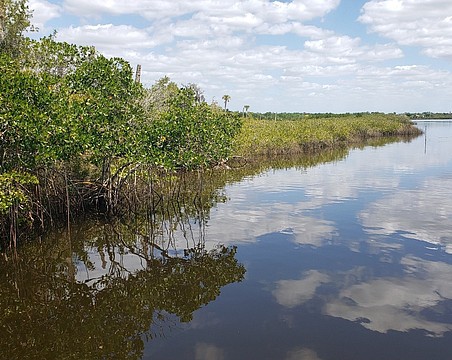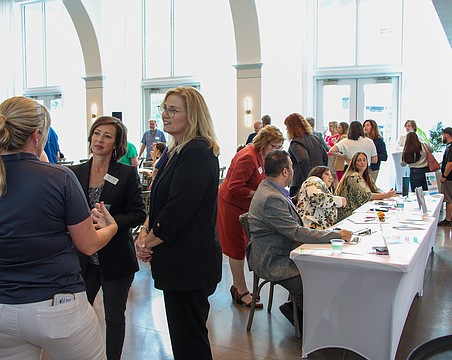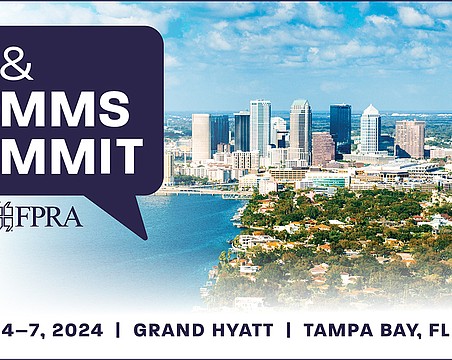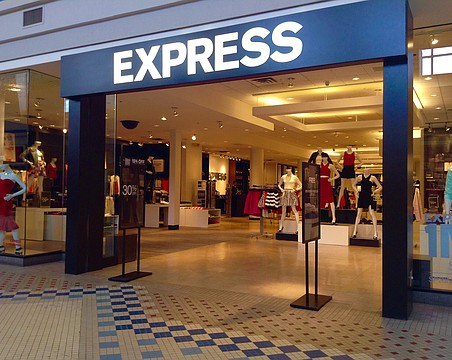What is Greenlight Pinellas?
Greenlight Pinellas is a proposed referendum in Pinellas County up for vote Nov. 4, designed to improve the county's bus system and build a passenger rail line. The proposal suggests swapping a 3/4 mill of the current property tax with a 1% sales tax increase to fund the increase in transportation.
The sales tax would increase bus service by 65% in Pinellas over the next six years. It would also fund 24 miles of passenger rail with 16 stations running from downtown St. Petersburg, through Carillon, to downtown Clearwater. The infrastructure's expected total cost to build is $2.2 billion over 10 years. The sales tax would go into place January 2016, with bus expansions complete by 2021, and rail open for service in 2024.
The bus line's operating expenses are estimated to be $124.2 million annually in 2021 and the rail system's operating costs are estimated to be $45.8 million annually in 2024. It estimates an average weekday rail ridership of 17,693 by 2035.
The 1% sales tax would not be charged on groceries, medicine or housing costs, according to Friends of Greenlight, the political action committee supporting the initiative. It will also only apply to the first $5,000 of any one item.
 The average Pinellas family will experience an increase of $104 a year in sales tax, but will save around $90 a year in property taxes, according to Friends of Greenlight. Homeowners with properties valued at $200,000 or more might even see a net savings, says Brad Miller, chief executive officer for the Pinellas Suncoast Transit Authority. The organization estimates one-third of the tax will be covered by tourists.
The average Pinellas family will experience an increase of $104 a year in sales tax, but will save around $90 a year in property taxes, according to Friends of Greenlight. Homeowners with properties valued at $200,000 or more might even see a net savings, says Brad Miller, chief executive officer for the Pinellas Suncoast Transit Authority. The organization estimates one-third of the tax will be covered by tourists.
If approved, who stands to win?
PSTA says Greenlight Pinellas will provide more mobility options to transport employees and customers to businesses in the area. It will also spur economic activity in a city that is already well developed.
Eliminating the property tax for transportation will save substantial dollars for some businesses and individuals, according to Miller.
 A handful of executives in St. Pete and Tampa have supported Greenlight, according to the initiative's public relations team. Big names include Mindy Grossman from HSN, Tom James from Raymond James, Chuck Sykes from Sykes Enterprises, Trevor Burgess from C1, Jeff Vinik from Tampa Bay Lightning, Liz Smith from Bloomin' Brands, Gary Sasso from Carlton Fields Jorden Burt, Steve Mason from Baycare, Bob Dutkowsky from Tech Data, and Mark Mondello from Jabil, just to name a handful. “We support Greenlight Pinellas because creating a modern transit system is imperative to the economic competitiveness of a region,” says Matt Silverman, president of baseball operations for the Tampa Bay Rays.
A handful of executives in St. Pete and Tampa have supported Greenlight, according to the initiative's public relations team. Big names include Mindy Grossman from HSN, Tom James from Raymond James, Chuck Sykes from Sykes Enterprises, Trevor Burgess from C1, Jeff Vinik from Tampa Bay Lightning, Liz Smith from Bloomin' Brands, Gary Sasso from Carlton Fields Jorden Burt, Steve Mason from Baycare, Bob Dutkowsky from Tech Data, and Mark Mondello from Jabil, just to name a handful. “We support Greenlight Pinellas because creating a modern transit system is imperative to the economic competitiveness of a region,” says Matt Silverman, president of baseball operations for the Tampa Bay Rays.
Though the boards of the St. Petersburg Area Chamber of Commerce, the Central Pinellas Chamber of Commerce, Clearwater Chamber of Commerce and Greater Tampa Chamber of Commerce have voiced support, the initiative is not without its critics.
If approved, who loses?
According to the Greenlight Pinellas financial feasibility analysis, fares from riders will provide 1/4 of the operating revenues for the system annually. That leaves the rest to taxpayers, whether it's through the sales tax, grants or other programs.
 According to Barb Haselden, the spokesman for the political action committee fighting the initiative, No Tax for Tracks, the demand and population density doesn't exist in Pinellas for increased funds to be allocated to PSTA. No Tax for Tracks has raised $90,000, compared with Greenlight's more than $1 million in funding. But Haselden says, “We're gonna win because we represent the people. We don't want the highest sales tax in Florida.” Big business from Tampa and Pinellas are dominating donations for Greenlight because of the incentives possible for development, she adds.
According to Barb Haselden, the spokesman for the political action committee fighting the initiative, No Tax for Tracks, the demand and population density doesn't exist in Pinellas for increased funds to be allocated to PSTA. No Tax for Tracks has raised $90,000, compared with Greenlight's more than $1 million in funding. But Haselden says, “We're gonna win because we represent the people. We don't want the highest sales tax in Florida.” Big business from Tampa and Pinellas are dominating donations for Greenlight because of the incentives possible for development, she adds.
Tiffany's Restaurant in Palm Harbor, Crabby Bill's, and Tahitian Resort Treasure Island are a few of the businesses supporting No Tax for Tracks. Haselden was hesitant to share names of other companies supporting, but says they include everything from a Harley dealership, a surgeon, an auto body shop, a landscape business, and a plant nursery along the path of the rail line. Haselden says a number of small businesses worry about losing business during construction. “Those in the path, they'll be squashed,” she says. “They won't be able to fight it and hold on.”
Other Projects
To see how the Greenlight Pinellas compares, check out similar efforts in the nation and their impacts.

Phoenix Valley METRO
Approval: 2004
Open: 2008
Size: 20-mile light rail serving Phoenix, Tempe and Mesa, with additional 40 miles in new rail lines planned to be complete by 2034.
Cost: $1.4 billion, one-half cent sales tax dedicated to regional transportation including transit, freeways, streets and bike/pedestrian facilities. Transit receives 1/3 of the half-cent tax that expires in 2020.
Ridership: 47,600 rides per day
Surrounding Development: $6.9 billion investment in development along the rail.

Denver FasTracks
Approval: 2004
Open: First FasTracks rail line open 2013, with 70% expected to be ready by 2018
Size: Transit expansion plan to build 122 miles of commuter rail and light rail, 18 miles of rapid bus transit and enhanced bus service across an eight-county district
Cost: $5.3 billion invested to date, voters approved 0.4% sales tax increase to fund transit expansions in 2004
Ridership: 83,000 rides per day
Surrounding Development: Around $1 billion in development around Denver Union Station alone
Challenges: The plan was supposed to be complete by 2018, but funding slumped during the recession pushed the completion date back indefinitely. Its completion depends on funding.

Orlando SunRail
Approval: 2007 (but executives halted development for several years after)
Open: 2014 (Phase I), estimated completion of commuter rail in 2016
Size: 32-mile commuter rail with 12 stations; planned to connect Volusia County to Osceola County by 2016.
Cost: $615 million in capital costs for Phase I and Phase II, split 50% federal funds, 25% state contributions, and 25% local partners, $20.7 million a year in maintenance and operations cost
Ridership: Average 3,800 riders per day
Surrounding Development: $60 million shopping center development along line, $200 million in construction for residential, retail and commercial
Challenges: Since paid service began in May 2014, ridership is below the estimated 4,300 per day for the first year at 3,800 per day.

Charlotte LYNX
Approval: 1998
Open: 2007 (First portion- LYNX Blue Line)
Size: The LYNX Blue Line covers 9.6 miles with 15 stops
Cost: $463 million, one-half cent sales tax approved by Mecklenburg County voters in 1998 to improve transit. Construction costs split among federal funding ($580 million), state ($299 million) and city ($281 million — mostly covered by sales tax).
Ridership: 14,400 rides/day
Surrounding Development: Estimated $1.4 billion in development along the line, including residential and commercial.
Challenges: An anti-transit group was able to get a repeal effort for the sales tax on the ballot in 2007, but voters rejected it by 70%, just three weeks before the light rail opened.
This article has been updated to correct the spelling of Carlton Fields Jorden Burt.

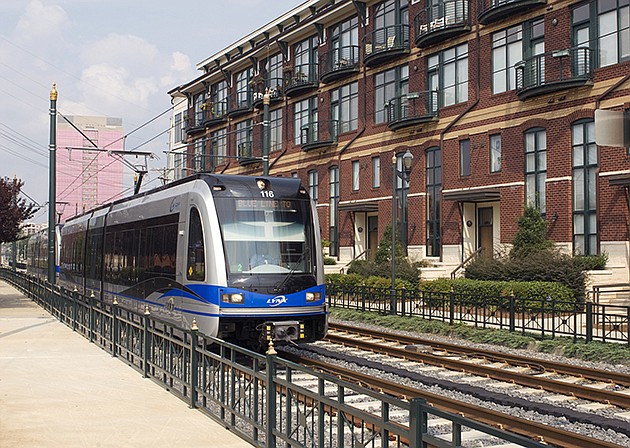
 The average Pinellas family will experience an increase of $104 a year in sales tax, but will save around $90 a year in property taxes, according to Friends of Greenlight. Homeowners with properties valued at $200,000 or more might even see a net savings, says Brad Miller, chief executive officer for the Pinellas Suncoast Transit Authority. The organization estimates one-third of the tax will be covered by tourists.
The average Pinellas family will experience an increase of $104 a year in sales tax, but will save around $90 a year in property taxes, according to Friends of Greenlight. Homeowners with properties valued at $200,000 or more might even see a net savings, says Brad Miller, chief executive officer for the Pinellas Suncoast Transit Authority. The organization estimates one-third of the tax will be covered by tourists. A handful of executives in St. Pete and Tampa have supported Greenlight, according to the initiative's public relations team. Big names include Mindy Grossman from HSN, Tom James from Raymond James, Chuck Sykes from Sykes Enterprises, Trevor Burgess from C1, Jeff Vinik from Tampa Bay Lightning, Liz Smith from Bloomin' Brands, Gary Sasso from Carlton Fields Jorden Burt, Steve Mason from Baycare, Bob Dutkowsky from Tech Data, and Mark Mondello from Jabil, just to name a handful. “We support Greenlight Pinellas because creating a modern transit system is imperative to the economic competitiveness of a region,” says Matt Silverman, president of baseball operations for the Tampa Bay Rays.
A handful of executives in St. Pete and Tampa have supported Greenlight, according to the initiative's public relations team. Big names include Mindy Grossman from HSN, Tom James from Raymond James, Chuck Sykes from Sykes Enterprises, Trevor Burgess from C1, Jeff Vinik from Tampa Bay Lightning, Liz Smith from Bloomin' Brands, Gary Sasso from Carlton Fields Jorden Burt, Steve Mason from Baycare, Bob Dutkowsky from Tech Data, and Mark Mondello from Jabil, just to name a handful. “We support Greenlight Pinellas because creating a modern transit system is imperative to the economic competitiveness of a region,” says Matt Silverman, president of baseball operations for the Tampa Bay Rays. According to Barb Haselden, the spokesman for the political action committee fighting the initiative, No Tax for Tracks, the demand and population density doesn't exist in Pinellas for increased funds to be allocated to PSTA. No Tax for Tracks has raised $90,000, compared with Greenlight's more than $1 million in funding. But Haselden says, “We're gonna win because we represent the people. We don't want the highest sales tax in Florida.” Big business from Tampa and Pinellas are dominating donations for Greenlight because of the incentives possible for development, she adds.
According to Barb Haselden, the spokesman for the political action committee fighting the initiative, No Tax for Tracks, the demand and population density doesn't exist in Pinellas for increased funds to be allocated to PSTA. No Tax for Tracks has raised $90,000, compared with Greenlight's more than $1 million in funding. But Haselden says, “We're gonna win because we represent the people. We don't want the highest sales tax in Florida.” Big business from Tampa and Pinellas are dominating donations for Greenlight because of the incentives possible for development, she adds.



